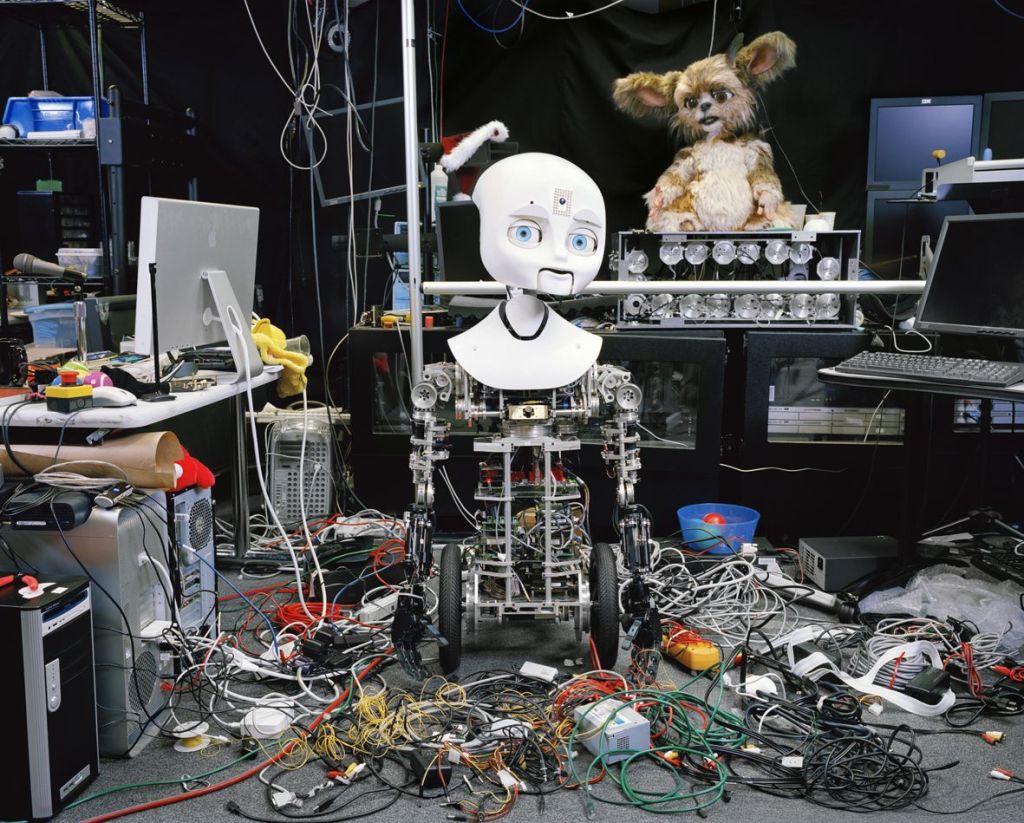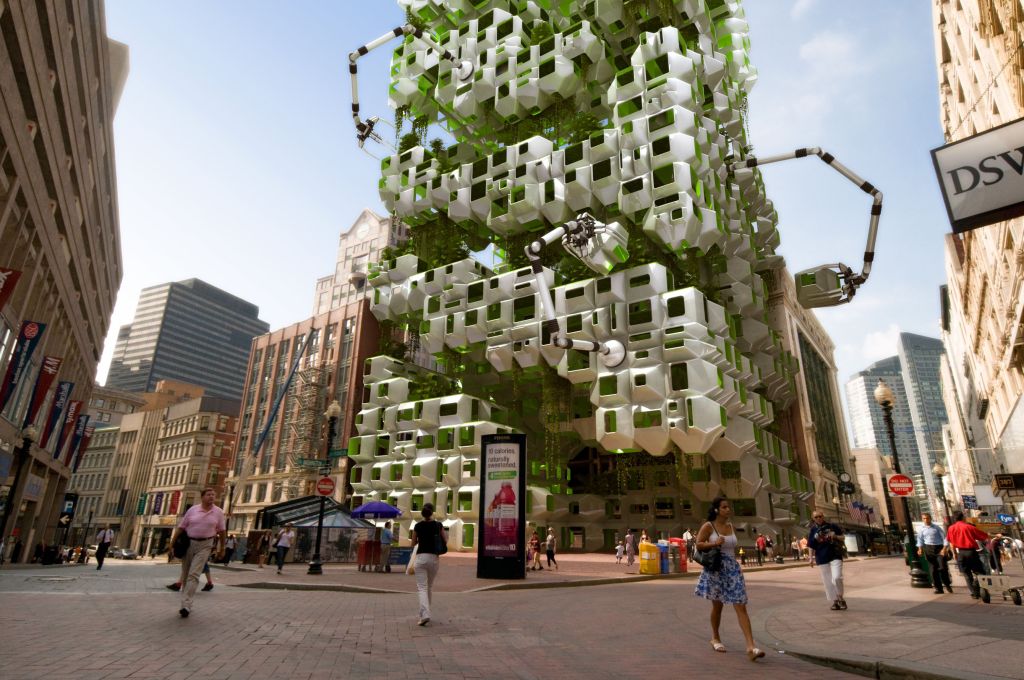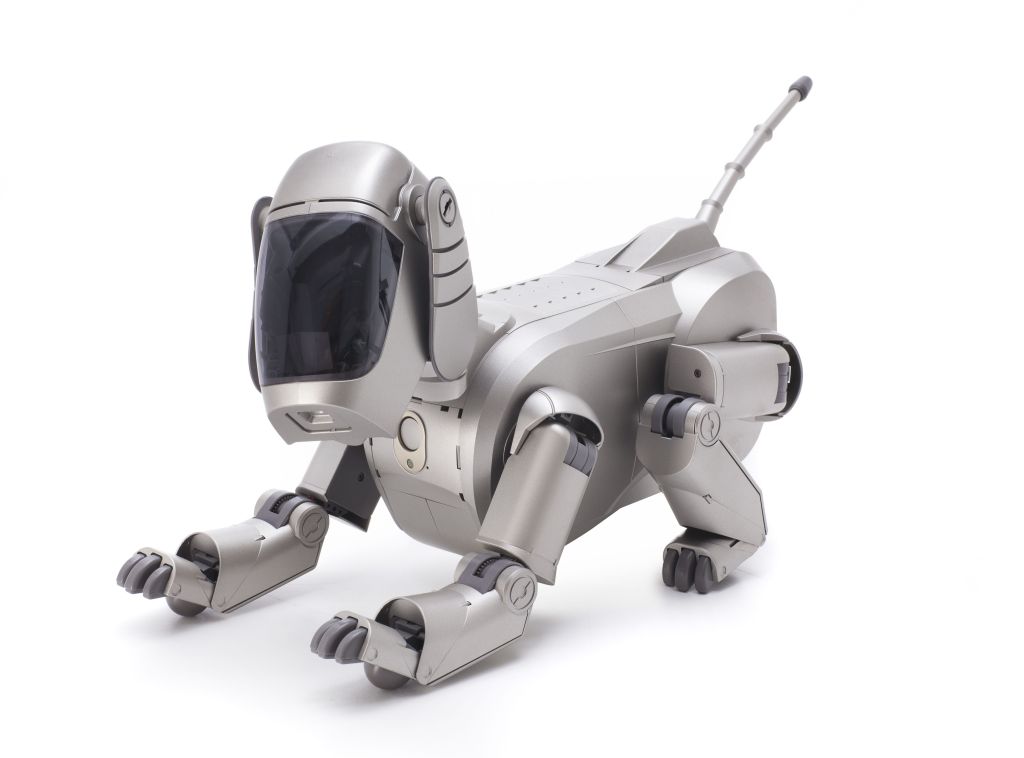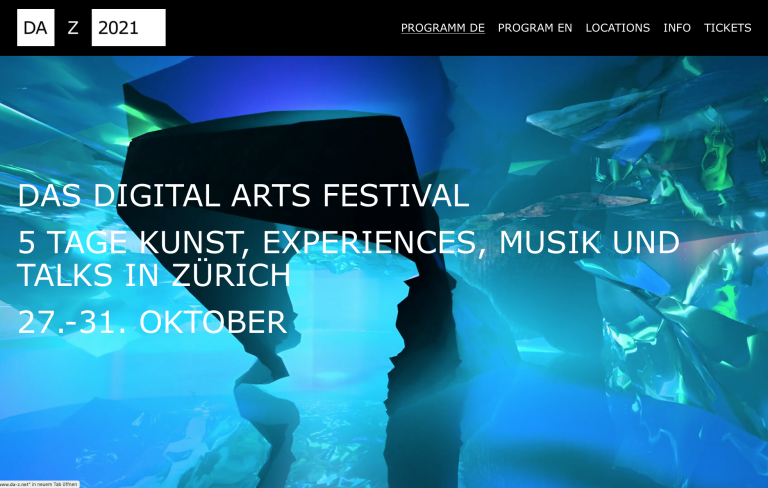Science fiction is becoming reality: robotics is finding its way into our lives more and more. Examples range from transport drones or care robots to internet bots. “Hello, Robot. Design between Man and Machine” was a major success for the Vitra Design Museum in 2017. The exhibition was created in collaboration with the MAK – Museum of Applied Arts, Vienna and the Design Museum Gent. It and returns once again to Weil am Rhein after its worldwide tour. For this purpose, it will be supplemented by important developments in robotics and digitalisation of recent years, as the robotics boom continues unabated. The exhibition will run from 24 September 2022 to 5 March 2023.
More than 200 exhibits illustrate the presence of robotics in our everyday lives

Yves Gellie, »Human Version 2.07 Nexi«, 2009 © Yves Gellie, Galerie du jour agnès b, Galerie Baudoin Lebon
The exhibition includes more than 200 exhibits from industry and the home, but also computer games, media installations and examples from film and literature such as the legendary R2-D2 robot from Star Wars in the original. They all illustrate how much our lives are already permeated by robots, even in the most intimate areas. At the same time, the last few years have shown how strongly political fields – such as elections or debates about diversity or climate change – can be controlled by algorithms and artificial intelligence and what risks arise from this. That is why the exhibition also takes up the ethical, social and political questions associated with the growing influence of robotics.
Robots have long been part of our mundane everyday lives
![Vincent Fournier, »Reem B #5 [Pal], Barcelona, Spain«, aus: »The Man Machine«, 2010 © Vincent Fournier](https://www.wuw.ch/app/uploads/2022/08/18_VDM_Hello-Robot_Vincent-Fournier_Reem-B-5-1024x743.jpg)
Vincent Fournier, »Reem B #5 [Pal], Barcelona, Spain«, from: »The Man Machine«, 2010; © Vincent Fournier

Höweler + Yoon Architecture and Squared Design Lab, »EcoPods«, 2009, Architectural mockup, © Höweler + Yoon Architecture and Squared Design Lab
Self-learning algorithms – so-called bots – are therefore just as much robots as communicating everyday objects, which are often referred to as the Internet of Things. In simplified terms, everything that is “smart” is considered a robot. And this no longer applies only to individual objects, but ultimately to our entire environment, which is becoming even more self-learning and autonomous every day. Design is at the interface between humans and this robotic environment. This goes far beyond the mere design of form and function. The exhibition “Hello, Robot. shows how design shapes the interaction and relationship between man and machine, but also between man and man – for better or for worse. In the process, we have to ask ourselves many questions, first and foremost: How do we – as individuals and as a society – want to deal with new technologies?
The exhibition is divided into four parts

MX3D Bridge, Amsterdam, 2021; 3D printed, stainless steel pedestrian bridge; © Anita Star / Joris Laarman Lab
The first part of the exhibition is about the old modernist enthusiasm for artificial humans and how popular culture has shaped our understanding of robots. Here we meet not only well-known robots from film and literature, such as R2-D2, the lovable astromech droid from Star Wars, but also the very real, four-legged robot Spot from Boston Dynamics. The second part of the exhibition is dedicated to the area in which robotics experienced its breakthrough: industry and the world of work. While robots are repeatedly described as a threat to workers in this context today, “Hello, Robot.” illuminates the current debate on this topic from different perspectives. The spectrum of exhibits ranges from the classic industrial robot to an installation by the group RobotLab, in which a robot produces manifestos on a continuous basis and thus questions where the boundaries between automatable work and human creativity lie. The third part of the exhibition shows how the new technology comes even closer to us – as a “friend and helper” in everyday life, in the household, in care, as a digital companion or even in cybersex. It is particularly exciting to observe how not only the relationship between man and machine is changing, but also the interaction between man and man. Among other things, the exhibition shows a tapestry by the French artist Éva Ostrowska. The fourth and last part is about the increasing fusion of humans and robotics, for example when we live in a “learning” building or move around in a so-called “smart city”. Technology shapes us, and we shape our technological, robotic environment. For his video installation “Google Maps Hacks”, the Berlin media artist Simon Weckert created an artificial traffic jam in Google Maps with a trolley full of smartphones on empty streets.

Hajime Sorayama, Sony Corporation, »AIBO Entertainment Robot (ERS-110)«, 1999 Private collection; Photo: Andreas Sütterlin
The exhibition makes it clear that the spread of robotics has been observed with ambivalence for decades. Then as now, the debate about artificial intelligence oscillates between utopia and dystopia, between the hope for a better, mechanised world and the fear of human disenfranchisement. In this context, the question of the responsibility of design also arises anew.
To accompany the exhibition, the publication “Hello, Robot. Design between man and machine” has been republished
An updated edition of the publication “Hello, Robot. Design between Man and Machine” has been published; with a detailed introduction and supplementary projects, important developments of recent years are discussed. In addition, there are numerous object descriptions, essays and interviews with Bruce Sterling, Fiona Raby, Anthony Dunne, Gesche Joost, Carlo Ratti and others; 2nd, revised and expanded new edition, 2022, softcover with embossing, 19 x 25 cm, 336 pages, approx. 260 illustrations, ISBN 978-3-945852-49-1 (German), €49.90


